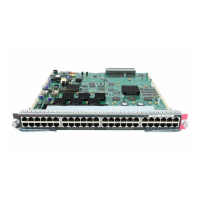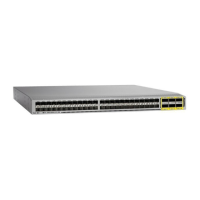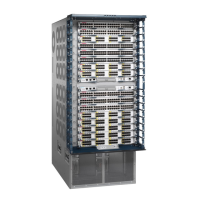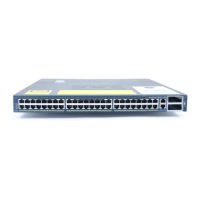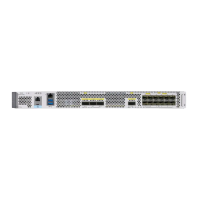1-17
Cisco TrustSec Configuration Guide
OL-22192-01
Chapter 1 Cisco TrustSec Overview
Using Cisco TrustSec-Incapable Devices and Networks in a Cisco TrustSec Network
VRF-Aware SXP
The SXP implementation of Virtual Routing and Forwarding (VRF) binds an SXP connection with a
specific VRF. It is assumed that the network topology is correctly configured for Layer 2 or Layer 3
VPNs, with all VRFs configured before enabling Cisco TrustSec.
SXP VRF support can be summarized as follows:
• Only one SXP connection can be bound to one VRF.
• Different VRFs may have overlapping SXP peer or source IP addresses.
• IP–SGT mappings learned (added or deleted) in one VRF can be updated only in the same VRF
domain. The SXP connection cannot update a mapping bound to a different VRF. If no SXP
connection exits for a VRF, IP–SGT mappings for that VRF won’t be updated by SXP.
• Multiple address families per VRF is supported. Therefore, one SXP connection in a VRF domain
can forward both IPV4 and IPV6 IP-SGT mappings.
• SXP has no limitation on the number of connections and number of IP–SGT mappings per VRF.
Layer 2 VRF-Aware SXP and VRF Assignment
VRF to Layer 2 VLANs assignments are specified with the cts role-based l2-vrf vrf-name vlan-list
global configuration command. A VLAN is considered a Layer 2 VLAN as long as there is no switch
virtual interface (SVI) with an IP address configured on the VLAN. The VLAN becomes a Layer 3
VLAN once an IP address is configured on its SVI.
The VRF assignments configured by the cts role-based l2-vrf command are active as long as a VLAN
remains a Layer 2 VLAN. The IP–SGT bindings learned while a VRF assignment is active are also added
to the Forwarding Information Base (FIB) table associated with the VRF and the IP protocol version. If
an SVI becomes active for a VLAN, the VRF to VLAN assignment becomes inactive and all the bindings
learned on the VLAN are moved to the FIB table associated with the SVI’s VRF.
The VRF to VLAN assignment is retained even when the assignment becomes inactive. It is reactivated
when the SVI is removed or when the SVI IP address is deconfigured. When reactivated, the IP–SGT
bindings are moved back from the FIB table associated with the SVI's VRF to the FIB table associated
with the VRF assigned by the cts role-based l2-vrf command.

